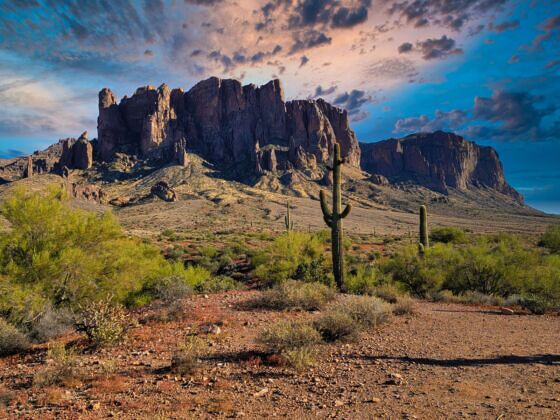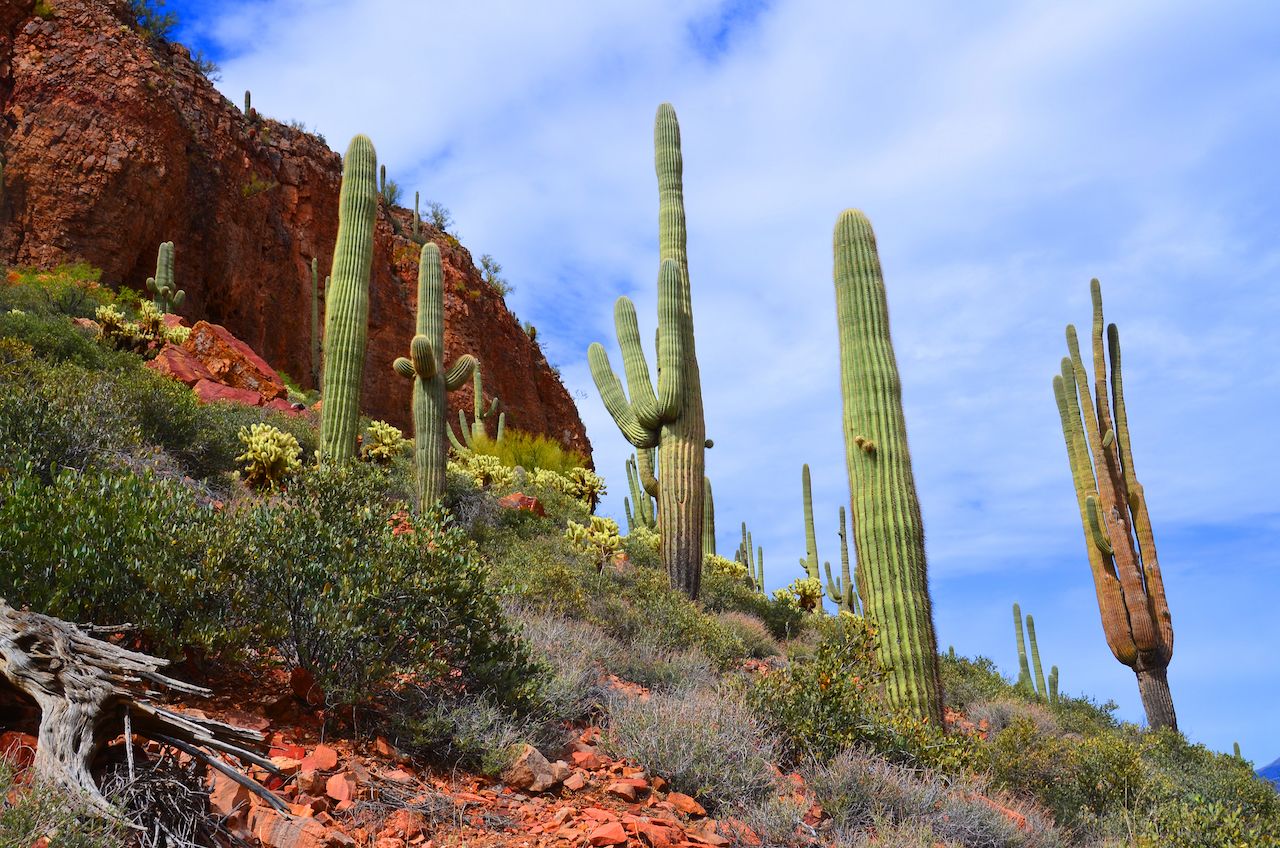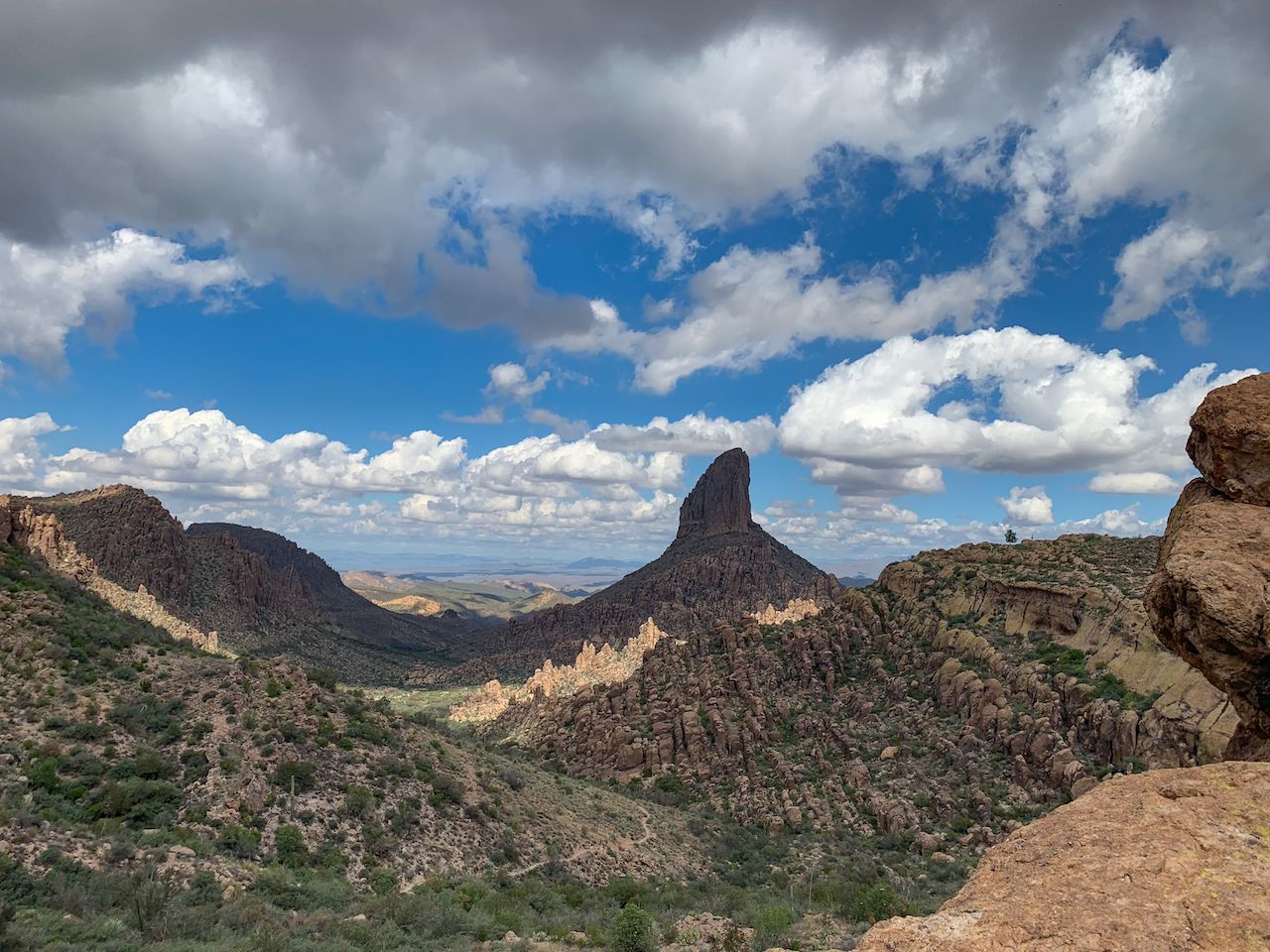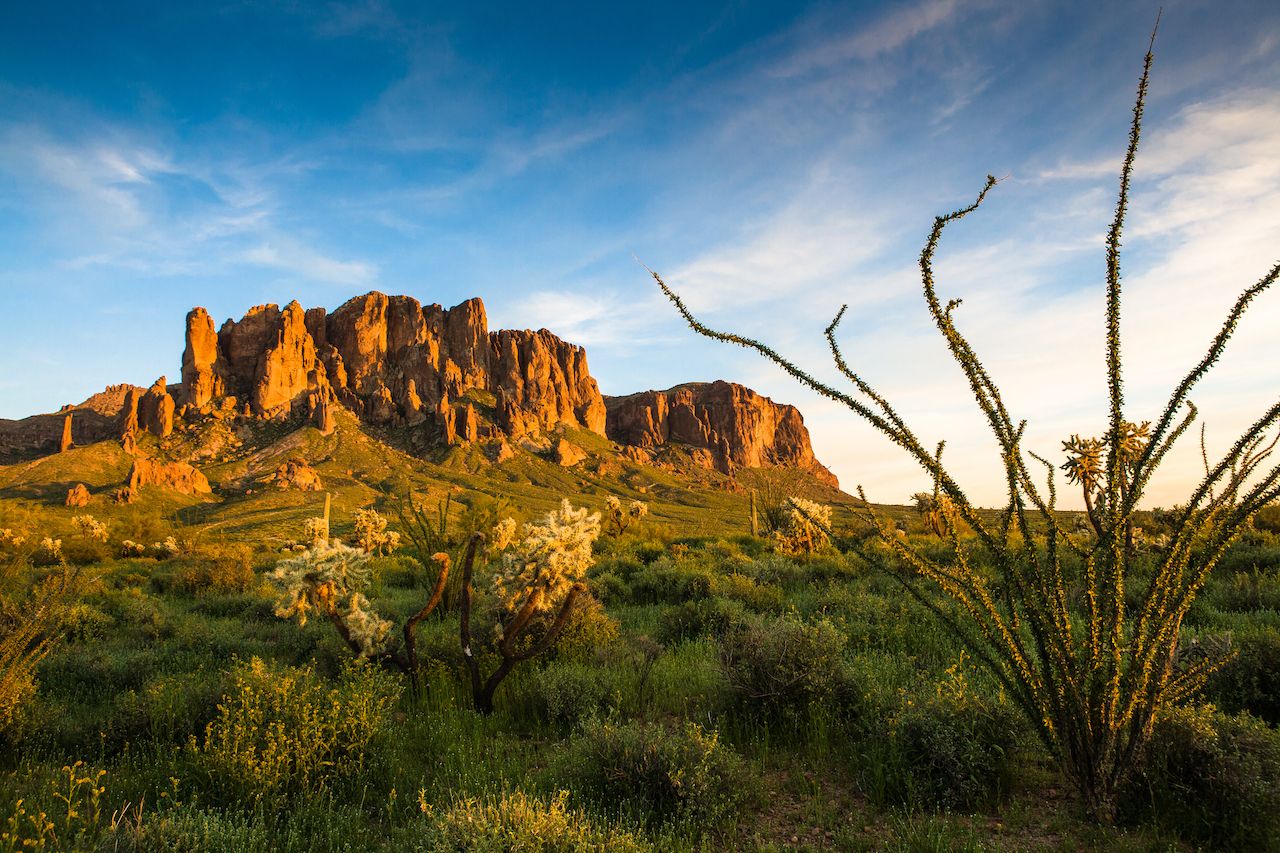Arizona is home to some seriously jaw-dropping scenery, like the Grand Canyon, Monument Valley, and Antelope Canyon. But those stunners are far from any major city.
Fortunately, just an hour from Phoenix sits an untouched swath of pristine Sonoran Desert: the Superstition Wilderness. It’s known for its red-rock spires and lanky saguaro cacti, as well as fairly small crowds compared to the destinations above. It offers equally stunning vistas, is full of wildlife, and has miles of trails to explore. That makes it an excellent place to backpack, especially if you only have one or two nights to spare or planning a last-minute trip.
Here’s everything to know about backpacking the Superstition Wilderness, plus all the detail you need for permits and planning.




